Koyaanisqatsi (English: /ko?j??n?s?k??tsi?/), also known as Koyaanisqatsi: Life Out of Balance, is a 1982 American experimental film directed by Godfrey Reggio with music composed by Philip Glass and cinematography by Ron Fricke.
| Koyaanisqatsi | |
|---|---|
| Directed by | Godfrey Reggio |
| Produced by | Godfrey Reggio |
| Written by |
|
| Music by | Philip Glass |
| Cinematography | Ron Fricke |
| Edited by |
|
Production company | Institute for Regional Education American Zoetrope |
| Distributed by |
|
Release date |
|
Running time | 85 minutes |
| Country | United States |
| Box office | $1.7 million |
The film consists primarily of slow motion and time-lapse footage of cities and many natural landscapes across the United States. The visual tone poem contains neither dialogue nor a vocalized narration: its tone is set by the juxtaposition of images and music. Reggio explained the lack of dialogue by stating "it's not for lack of love of the language that these films have no words. It's because, from my point of view, our language is in a state of vast humiliation. It no longer describes the world in which we live." In the Hopi language, the word Koyaanisqatsi means "unbalanced life". The film is the first in the Qatsi trilogy of films: it is followed by Powaqqatsi (1988) and Naqoyqatsi (2002). The trilogy depicts different aspects of the relationship between humans, nature and technology. Koyaanisqatsi is the best known of the trilogy and is considered a cult film. However, because of copyright issues, the film was out of print for most of the 1990s.
Screenplay
The first image in the film is of the Great Gallery pictograph in Horseshoe Canyon, in Canyonlands National Park, Utah. The section shown depicts several tall, shadowed figures standing near a taller figure adorned with a crown. The next image is a close-up of a Saturn V rocket during its launch (Apollo 11). The film fades into a shot of a desolate desert landscape. From there, it progresses to footage of various natural phenomena such as waves and clouds.
The film's introduction to human involvement in the environment is a low aerial shot of choppy water, cutting to a similar shot of rows of cultivated flowers. After aerial views of monumental rock formations partly drowned by the artificial Lake Powell, we see a large mining truck causing billows of black dust. This is followed by shots of power lines in the desert. Man's continued involvement in the environment is depicted through images of mining operations, oil fields, the Navajo Generating Station, the Glen Canyon Dam, and atomic bomb detonations in a desert. Following the atomic bomb detonations, the next sequence begins with a shot of sunbathers on a beach, then pans to the San Onofre Nuclear Generating Station in the background. Shots of taxiing United Airlines Boeing 747 aircraft and traffic patterns during rush hour are seen on a freeway and a shot of a large parking lot. This is followed with stock footage of Soviet tanks lined up in rows and a military aircraft, and an aircraft carrier.
Time-lapse photography of shadows of clouds are seen moving across the skyscrapers. Shots of various housing projects in disrepair, and includes footage of the decay and demolition of the Pruitt-Igoe housing project in St. Louis. The sequence ends with footage of the destruction of large buildings. A time-lapse shot of a crowd of people who appear to be waiting in a line. This is followed by shots of people walking along streets in slow motion.
The next sequence begins with shots of buildings and a shot of a sunset reflected in the glass of a skyscraper. The sequence uses time-lapse photography of the activity of modern life. The events captured in this sequence involve people interacting with modern technology. The first shots are traffic patterns as seen from skyscrapers at night. This is followed by a composite shot of the moon passing behind a skyscraper. The next shots are closer shots of cars on a highway. The sun rises over the city and we see people hurrying to work. The film shows at regular speed the operation of machines packaging food. People are shown sorting mail, sewing jeans, manufacturing televisions and doing other jobs with the use of modern technology. A shot of hot dogs being sent down rows of conveyors is followed by a shot of people moving up escalators. The frenetic speed and pace of the cuts and music do not slow as shots of modern leisure are shown. People eat, play, shop and work at the same speed. The sequence begins to come full circle as the manufacture of cars in an assembly line factory is shown.
More shots of highway traffic are shown, this time in daylight. The film shows the movement of cars, shopping carts, and televisions on an assembly line, and elevators moving from first-person perspective. The film then shows clips from various television shows being channel surfed in fast motion. The film, in slow motion, then shows several people reacting to being candidly filmed on the street. The camera stays on them until the moment when they acknowledge its presence by looking directly at it. The sequence then shows cars moving much faster than they were moving before.
Pictures of microchips and satellite photography of metropolitan cities are shown, comparing the lay of each of them. Various shots of people are seen from all walks of modern life, from beggars to debutantes. The final sequence shows footage of a rocket lifting off, only to end up exploding after a few seconds. Editing suggest that there is only one rocket, while in fact two different events were used: The first batch of footage shows a Saturn V lifting off (Apollo 11), followed by footage of the May 1962 explosion of the first Atlas-Centaur. The camera follows a flaming rocket engine and a white vapor trail or smoke against a blue sky as the debris plummets toward the ground. The film concludes with another shot of desert rock art similar to the image at the beginning. Epilogue shows the translation of the titular Hopi word and of the prophecies sung in the last part of the soundtrack.
Background
In 1972, Godfrey Reggio, of the Institute for Regional Education (IRE), was working on a media campaign in Albuquerque, New Mexico, which was sponsored by the American Civil Liberties Union (ACLU). The campaign involved invasions of privacy and the use of technology to control behavior. Instead of making public service announcements, which Reggio felt "had no visibility," advertising spots were purchased for television, radio, newspapers, and billboards. Over thirty billboards were used for the campaign, and one design featured a close-up of the human eye, which Reggio described as a "horrifying image." To produce the television commercials the IRE hired cinematographer Ron Fricke, who worked on the project for two years. The television advertisements aired during prime time programming and became so popular that viewers would call the television stations to learn when the next advertisement would be aired. Godfrey described the two-year campaign as "extraordinarily successful," and as a result, Ritalin (methylphenidate) was eliminated as a behavior-modifying drug in many New Mexico school districts. But after the campaign ended, the ACLU eventually withdrew its sponsorship, and the IRE unsuccessfully attempted to raise millions of dollars at a fundraiser in Washington, D.C. The institute only had $40,000 left in their budget, and Reggio was unsure how to use the small amount of funds. Fricke insisted to Reggio that the money could be used to produce a film, which led to the production of Koyaanisqatsi.
Filming
Fricke and Reggio chose to shoot unscripted footage and edit it into an hour-long film. Production began in 1975 in St. Louis, Missouri. 16 mm film was used due to budget constraints, despite the preference to shoot with 35 mm film. Footage of the Pruitt–Igoe housing project was shot from a helicopter, and Fricke nearly passed out during filming, having never flown in a helicopter before. Reggio later chose to shoot in Los Angeles and New York City. As there was no formal script, Fricke shot whatever he felt would "look good on film". While filming in New York City, Fricke developed an idea to shoot portraits of people. A grey paper backdrop was displayed in Times Square, and Fricke stood 10 feet (3 m) back with the camera. People walking by started posing for the camera, thinking it was a still camera, and several shots from the setup ended up in the film. Reggio was not on location in Times Square when Fricke shot the footage and thought the idea of shooting portraits of people was "foolish". Upon viewing the footage, Reggio decided to devote an entire section of the film to portraits. The footage was processed with a special chemical to enhance the film's shadows and details, as all footage was shot only with existing lighting. The IRE's $40,000 was exhausted after the filming, and almost two cases of film had been used. The unedited footage was screened in Santa Fe, New Mexico, but Fricke said it was "boring as hell" and there were "not that many good shots". Fricke later moved to Los Angeles, and took a job as a waiter, unable to get a job in the film industry. While Fricke was working in Los Angeles, he edited the footage into a twenty-minute reel, but "without regard for message or political content".
—Ron Fricke
The IRE was continuously receiving funding and wanted to continue the project in 1976, using 35 mm film. After quitting his waiting job, Fricke traveled with a camera crew to the Four Corners, which was chosen for filming for its "alien look". Due to the limited budget, Fricke shot with a 16 mm zoom lens onto 35 mm film. To compensate for the lens size, a 2× extender was added, which turned it into a full 35 mm zoom lens, allowing footage to be clearly captured onto 35 mm film. The two-week shoot included aerial footage taken from an airplane using a hand-held camera and ground footage taken using a tripod. The first aerial footage was too "shaky", so additional footage was taken from a camera mounted onto the airplane. Fricke traveled back to New York City in 1977, during which the blackout occurred. Footage of the blackout was filmed in Harlem and the South Bronx, and the film was desaturated to match the appearance of the 16 mm footage.
Reggio and Fricke came across time-lapse footage in "some low-visibility commercial work". They felt such footage was "the language were missing", and collectively decided to imple
Watch movie Koyaanisqatsi online on Amazon
Watch movie Koyaanisqatsi online
Watch The Movie On PrimeIntaqaam Full HD Movie Download
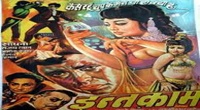
Champion Full HD Movie Download
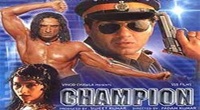
Dil Ne Phir Yaad Kiya (2003) Full HD Movie Download
.jpg)
Aag Ka Dariya Full HD Movie Download
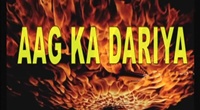
Mann Full HD Movie Download

Baat Ek Raat Ke Full HD Movie Download
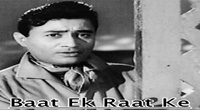
Prem Aggan Full HD Movie Download
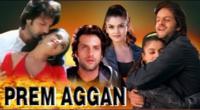
Prince (1969) Full HD Movie Download
.jpg)
Jyoti Bane Jwala Full HD Movie Download
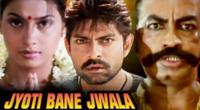
April Fool (1964) Full HD Movie Download
.jpg)
Rakshak: The Protector Full HD Movie Download
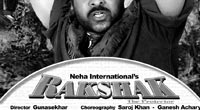
Pyasi Chudail Full HD Movie Download
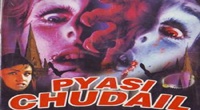
Karisma Kali Ka Full HD Movie Download
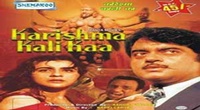
Bikini Bloodbath Full HD Movie Download

Harry Potter and the Order of the Phoenix Full HD Movie Download
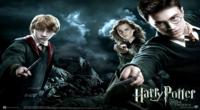
Final Destination 3 Full HD Movie Download
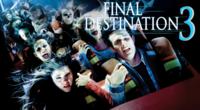
Swimming Pool Full HD Movie Download

Jai Santoshi Mata Full HD Movie Download
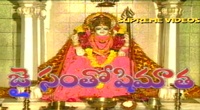
City War Full HD Movie Download
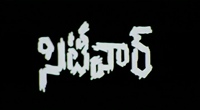
Kiskinda Kanda Full HD Movie Download
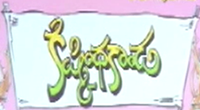
Mujhse Dosti Karoge Full HD Movie Download

Download latest Movie from bollywood
- 1> baaghi 3
- 2> THE SKY IS PINK MOVIE FULL STORY AND REVIEW
- 3> Luka Chuppi
- 4> TO ALL THE BOYS I’VE LOVED BEFORE
- 5> Kabir Singh
- 6> Street Dancer 3D
- 7> Simmba
- 8> Gone Girl
- 9> The Girl Who Lived
- 10> Ludo
- 11> DILWALE DULHANIA LE JAYENGE
- 12> GUILTY
- 13> The Godfather
- 14> Adventures of Rusty
- 15> Sooryavanshi
- 16> Satyameva Jayate 2
- 17> Thappad
- 18> Bhool Bhulaiyaa 2
- 19> KGFChapter 2
- 20> Mardaani 2
- 21> Pinjar
- 22> Shivaji maharaj
- 23> Ek Villian 2
- 24> Hungama 2
- 25> Divergent
- 26> Mumbai Saga
- 27> The Internship
- 28> HIT (telugu)
- 29> Panga
- 30> The perfect date
- 31> 16 December
- 32> Gopala Gopala (Telugu)
- 33> Brahmastra
- 34> Gangubai Kathiawadi
- 35> Manmadhudu
- 36> Nenu local
- 37> Mahanati
- 38> Shatamanam bavathi
- 39> Lagaan
- 40> After
- 41> MOM
- 42> Shamshera
- 43> Raguvaran BTech
- 44> Khakee
- 45> The villain
- 46> OM
- 47> Mr. perfect
- 48> Bueatifull mind
- 49> Hichki
- 50> Gabbar Singh
- 51> Jogi
- 52> Before Sunrise
- 53> Before Sunset
- 54> Before Midnight
- 55> The Big Bull
- 56> Top Gun: Maverick
- 57> The Purge
- 58> The Sky is Pink
- 59> Laxmmi Bomb
- 60> Sadak 2
- 61> Sufna
- 62> Prithviraj
- 63> PK
- 64> Coolie No 1(2020)
- 65> Black Widow
- 66> Dear Zindagi
- 67> Dil Bechara
- 68> PHIR HERA PHERI
- 69> WAR
- 70> Dostana
- 71> RRR: Roudram Ranam Rudhiram
- 72> Maidan
- 73> Dabbang 3
- 74> Chhalaang
- 75> life as we know it
- 76> SherShaah
- 77> Sandeep Aur Pinky Faraar
- 78> Event Horizon
- 79> 83
- 80> Radhe: Your Most Wanted Bhai
- 81> Gunjan Saxena: The Kargil Girl
- 82> Mr India
- 83> Vivah
- 84> Anokha Bandhan
- 85> Ghost
- 86> Bhoot: Part One - The Haunted Ship
- 87> Haseen Dilruba
- 88> Laal Singh Chaddha
- 89> Qismat
- 90> Rajput
- 91> Drive
- 92> Dil Chahta Hai
- 93> Dil Ki Baazi
- 94> Dil Ka Rishta
- 95> Teesri Manzil
- 96> Dil
- 97> Love Aaj Kal
- 98> Khaali Peeli
- 99> Bunty Aur Babli 2
- 100> Atrangi Re
- 101> Gulabo Sitabo
- 102> Jodi
- 103> Suraj Pe Mangal Bhari
- 104> Deewana
- 105> Attack
- 106> Sardar Udham Singh
- 107> Toofan
- 108> THE LOVEBIRDS
- 109> Jersey
- 110> Ginny Weds Sunny
- 111> Thalaivi
- 112> Shiddat
- 113> Angels vs Zombies
- 114> Koi Mil Gya
- 115> Thank God
- 116> Bhuj: The Pride of India
- 117> Hum Aapke Hain Kaun
- 118> The Platform
- 119> Bird Box
- 120> Roohi Afzana
- 121> Torbaaz
- 122> Nikamma
- 123> World War Z
- 124> Extraction
- 125> Train to Busan
- 126> Life of Pi
- 127> SHAADI MEIN JROOR AANA
- 128> Himmat Aur Mehnat
- 129> To All The Boys: P.S. I Still Love You
- 130> Mimi
- 131> Good Newwz
- 132> Shubh Mangal Zyada Saavdhan
- 133> Raabta
- 134> Harry Potter and the Philosopher's Stone
- 135> Harry Potter and the Chamber of Secrets
- 136> Chhapaak
- 137> War of the Worlds
- 138> Harry Potter and the Prisoner of Azkaban
- 139> Harry Potter and the Goblet of Fire
- 140> MURDER MYSTERY
- 141> Shakuntala Devi
- 142> Bachchan Pandey
- 143> Jayeshbhai Jordar
- 144> Sheer Qorma
- 145> Saina
- 146> 'O' Pushpa I hate tears
- 147> Kedarnath
- 148> MS Dhoni The Untold Story
- 149> Chhichhore
- 150> Badhaai Ho
- 151> Unstoppable
- 152> Oz the Great And Powerful
- 153> The Girl on the Train
- 154> Haathi Mere Saathi 2020
- 155> The Conjuring: The Devil Made Me Do It
- 156> Gandhi Se Pehle Gandhi
- 157> The Song of Scorpions
- 158> Srimanthudu
- 159> Hello Guru Prema Kosame
- 160> Beauty and The Beast
- 161> Black Panther
- 162> Charlie and the Chocolate Factory
- 163> Bole Chudiyan
- 164> Fidaa
- 165> Duvvada Jagannadham
- 166> Bruce Lee: The Fighter
- 167> Hyper
- 168> Yaara
- 169> Red (2020)
- 170> Shivam
- 171> That Is Mahalakshmi
- 172> Nishabdham
- 173> Aashram 2020 web series
- 174> Laxmii
- 175> Mismatched
- 176> STUDENT OF THE YEAR 2
- 177> NAIL POLISH
- 178> Ramprasad Ki Tehrvi
- 179> KAAGAZ
- 180> 12 o Clock
- 181> The Power
- 182> bolo hau
- 183> Tribhanga
- 184> JAMUN
- 185> Madam Chief Minister
- 186> Maasaab
- 187> Aadhaar
- 188> Tanhaji
- 189> Bhaagi 3
- 190> Bhootnath
- 191> MALANG
- 192> Jai Mummy Di
- 193> Haathi Mere Saathi 2021
- 194> Shakeela
- 195> Unpaused
- 196> Annayya
- 197> Vamsoddharakudu
- 198> Mrugaraju
- 199> Narasimha Naidu
- 200> Sankranti
- 201> Manasu Maata Vinadhu
- 202> Anjaane
- 203> Apaharan
- 204> Bachke Rehna Re Baba
- 205> Bewafaa
- 206> Roohi
- 207> Radhe
- 208> Zindagi Khoobsoorat Hai
- 209> Yeh Mohabbat Hai
- 210> Yeh Kya Ho Raha Hai?
- 211> The Tomorrow War
- 212> DehradunDiary
- 213> Meri Shaadi Karaoo
- 214> Matruu Ki Bijlee Ka Mandola
- 215> No One Killed Jesica
- 216> Aag Ka Goola
- 217> Eight Million Dollars
- 218> Three Hundred
- 219> Cats and Dog
- 220> Decoy
- 221> Gold Rush
- 222> You Have Got Mail
- 223> Final Destination three
- 224> Tofan
- 225> Jungle
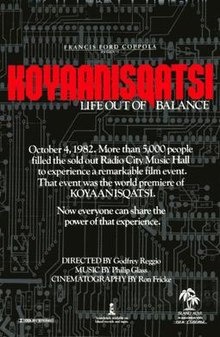 Story of movie Koyaanisqatsi :
Story of movie Koyaanisqatsi : 